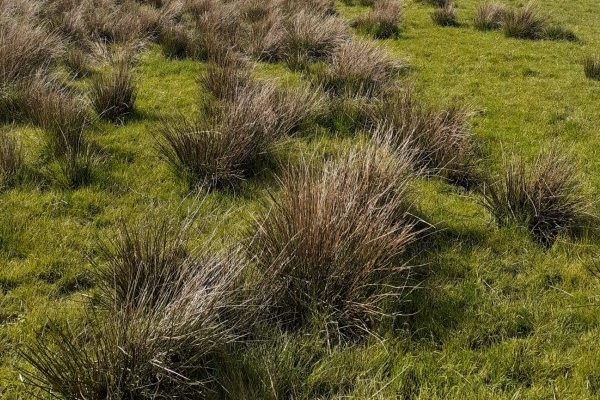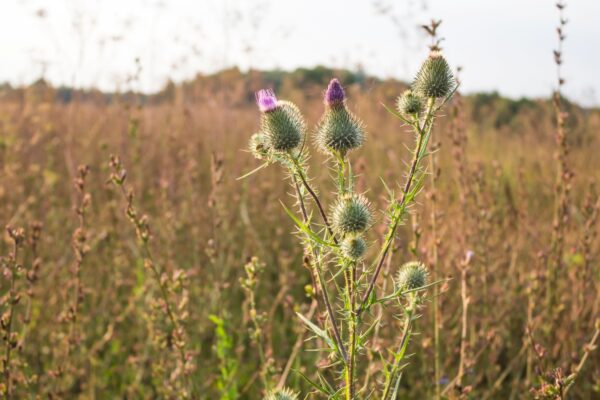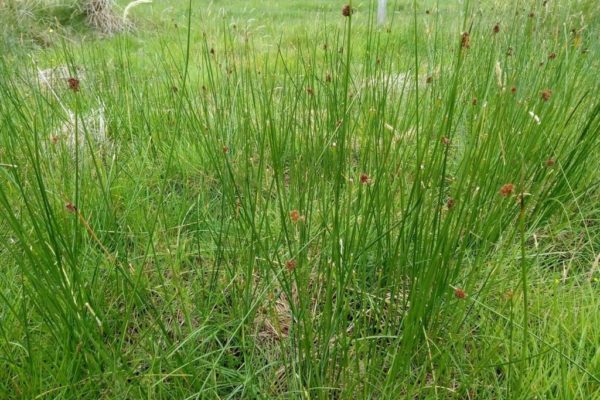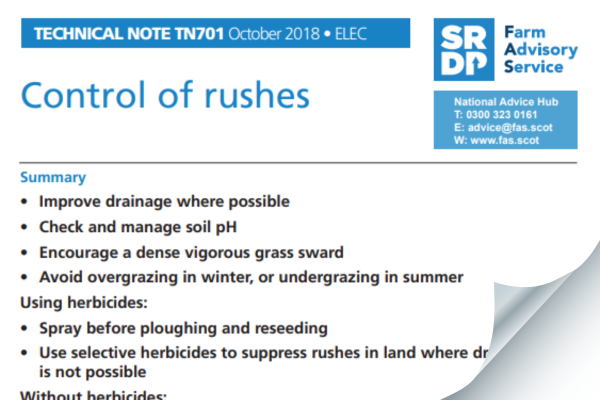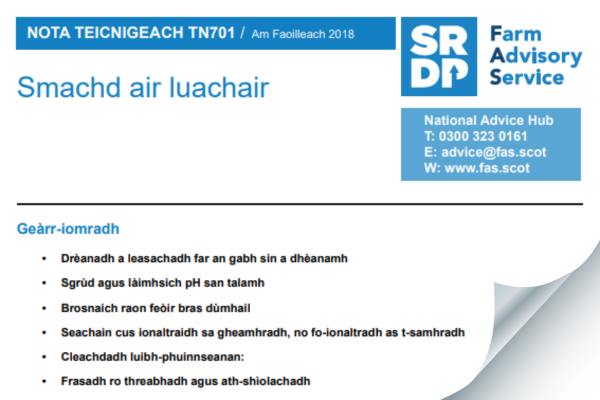Management and Control of Rushes
Rushes are a common sight on grassland. While small patches can are useful shelters during lambing and calving, they are generally considered invasive weeds that reduce grass growth and lower forage quality. Their presence often indicates underlying problems like poor drainage, acidic soils (low pH), deficiencies in phosphate and potash, ongoing soil damage from livestock (poaching), weak grass cover, or poor overall land management.
Below we have some resources that will help you manage and control rushes on your farm or croft.
Videos
Case Study - Managing Rushes at Drumsmodden Farm
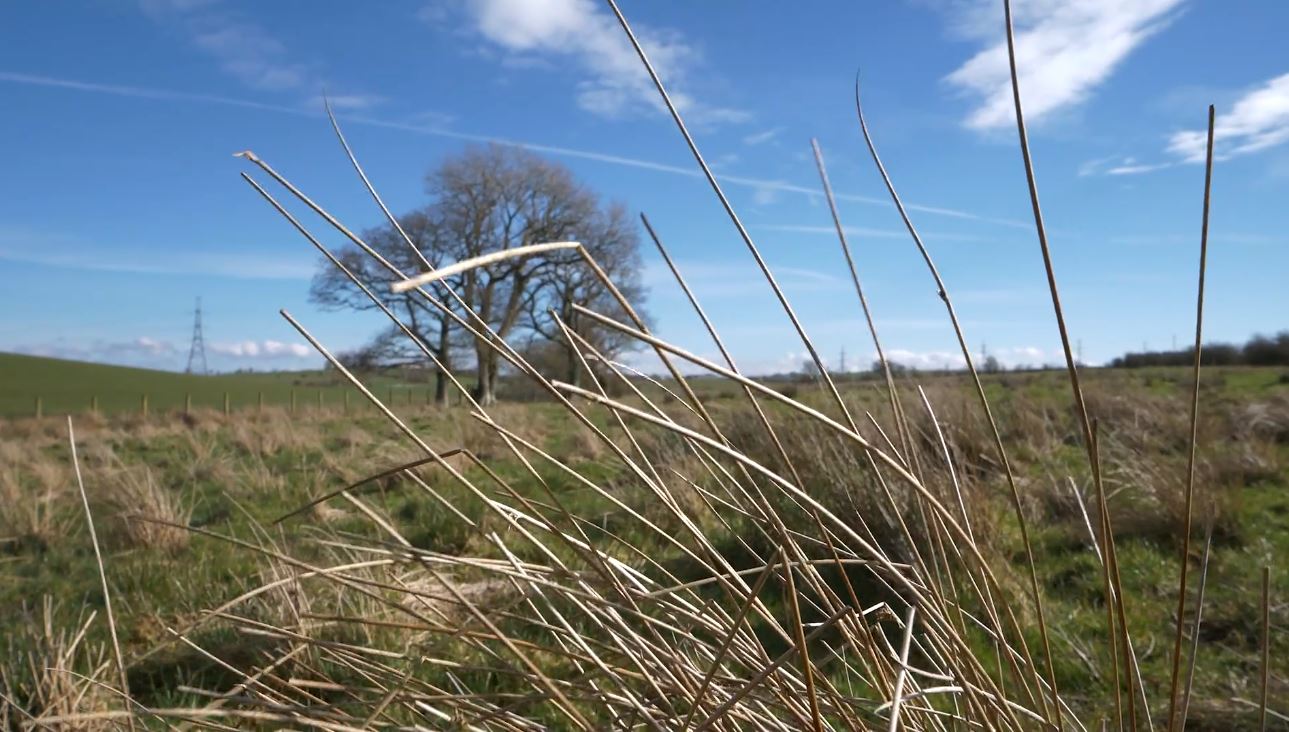
Rush Control for Grassland Productivity - An Ayrshire Case Study
As part of the FAS Grassland Productivity series, we’ve followed Sam and Emma Robinson’s efforts to control rushes and improve grassland productivity at Drumsmodden Farm near Ochiltree, East Ayrshire. While the farm is productive and well-suited to growing grass, its heavy soils and high rainfall present challenges. One particularly troublesome 18-acre low-lying field has long frustrated Sam due to poor drainage and a severe infestation of Soft Rush. In 2023, Sam took part in a trial to explore various methods of Soft Rush control. Read more >>
Sign up to the FAS newsletter
Receive updates on news, events and publications from Scotland’s Farm Advisory Service

